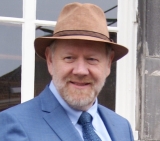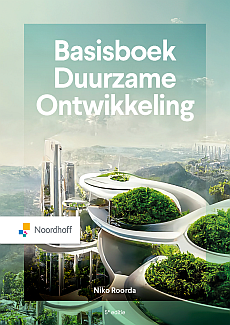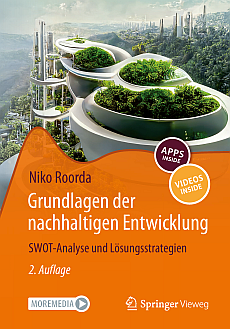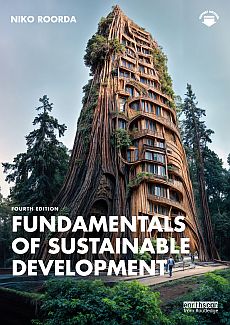| Niko Roorda: Author, Speaker & Consultant for Sustainable Development |
March 2025: >20,000 reads of Roorda's online work, ResearchGate reports. | April 2025: >150 citations of Fundamentals of SD in scientific books & articles | June 2025: >115,000 downloads of Grundlagen der nachhaltigen Entwicklung (1st Edition) |
Dr. Niko Roorda (1955) started his work on sustainable development (SD) in 1991, when he developed the World's first university program (BSc) dedicated to sustainability in the entire world. Roorda presented papers & lectures in at least 18 countries.
♦ Since 1998, Roorda works as an SD consultant for universities & colleges and for companies & non-profit organisations in several
countries. His first academic SD textbook appeared in 2005. Since then, he wrote more than 20 books and editions.
♦ After graduation as an astronomer (BSc, 1972) and as a theoretical physicist and philosopher of science (MSc, 1981), he had his
PhD in 2010 in the social sciences, focusing on education for sustainable development (ESD). His PhD Thesis is still cited regularly.
♦ Roorda was honoured with the Dutch National Award for Innovation and Sustainable Development.
In 2018, he was elected as the Netherlands' Sustainability Lecturer of the Year. > Find the details here.
Keynote, Sept. 2024: at the Making Football Matter Conference of Feyenoords Foundation, Rotterdam. > Tap or click on the image: |
Newsflash (in Dutch):
Nieuw boek, december 2025: De Toekomst is van iedereen.
Manifest voor een Maatschappijbrede Dialoog voor de Toekomst van ons en onze kinderen en (achter)kleinkinderen.
> Zie de boekpagina!
Roorda's latest textbook, January 2025: published in three languages
For Universities & Colleges / Voor Universiteiten en Hogescholen
In January 2025, Roorda's brand new textbook was published simultaneously in Dutch (by Noordhoff), German (Springer) and English (Routledge). The book was presented in festive fashion during a Symposium dedicated to the new book.
The book introduces sustainable development to university & college students. It offers detailed information & insights to researchers and practitioners.
In earlier years, new editions of Roorda's book were updates to previous ones, after the first edition was published in 2005.
This time, however, it took Roorda three years to completely write the book anew, in order to match with all sensational global scientific, technological, economic, political, educational and sustainability developments over the last decades.
The new textbook is based on thorough research, as illustrated by the extensive Bibliography, with more than 1200 titles.
> Tap or click on one of the book covers below, to find detailed information about them.
> Tik of klik op de afbeelding: |
> Tap or click on the image: |
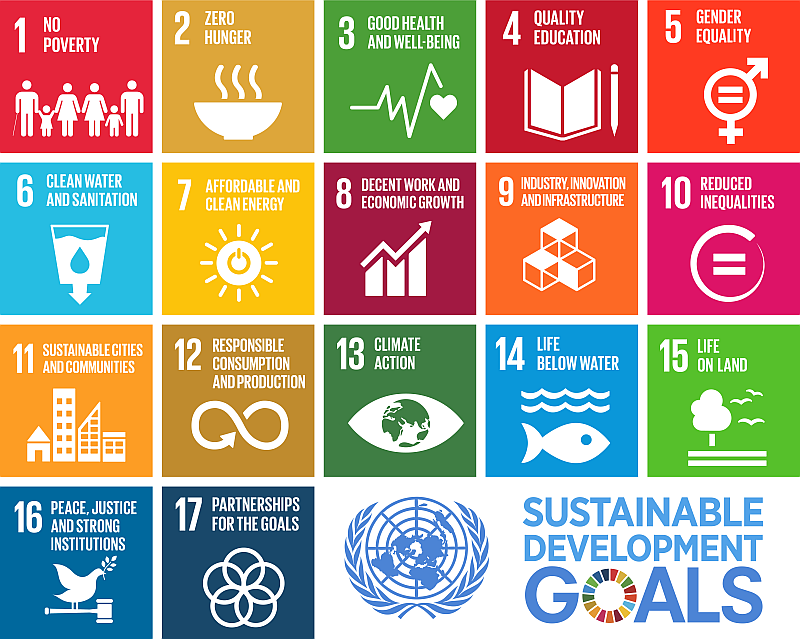 Two focuses in the new book. Short-term: the SDGs. Long-term: Transitions.
Two focuses in the new book. Short-term: the SDGs. Long-term: Transitions.
Are you familiar with the SDGs, the globally agreed Sustainable Development Goals? They are generally accepted and hugely important; and of course they play a major role in the new book, as the Dutch inhoudsopgave, the German Inhaltsverzeichnis and the English Table of Contents prove.
However: the SDGs are only short-term related, already ending in 2030, encouraging us to accomplish no more than systemic improvements, of at the very best: innovations; while sustainable development is long-term related by definition, requiring fundamental transitions.
> Read more about this: go to the full text of a section of the book in Dutch, German or English. Figure 6.1. The SDGs
So, besides the SDGs, the book focuses on profound systemic change, such as the global energy transition (including the EU Green Deal), and the transition to a circular economy, which is to be firmly embedded within nature as one holistic ecosystem.

Figure 10.8: The Quintuple Helix: the quadruple human world, embedded in the biological community,
together forming a holistic ecosystem, developing towards intrinsic sustainability
Background photo: Sunrise222se on Wikimedia
In the final chapters, everything is discussed within the context of the Anthropocene, the Age of Humans, after which a route is shown through which we will be able to transcend from the current glued-on sustainability, with its SDGs, to intrinsic sustainability.
For this purpose, a series of Intrinsic Sustainability Goals is proposed: the ISGs, listed on this website in Dutch, German and English. Next, the book introduces an Action Perspective which enables everyone – citizens, consumers and, most of all, professionals and students – to contribute to sustainable development.
Finally, the book explains how to become a true Sustainably Competent Professional, with the help of the RESFIA+D assessment model, described on this website in all three languages: Dutch, German and English.
About the Front Covers
The covers of the Dutch and the German book show an amazing image. The English book uses a different, equally astonishing image. Both images are created by the famous Indian architect Manas Bhatia, who gave his kind permission to apply his creations for the books.
Bhatia is known, for instance, for the article posted by the newssite CNN, which wrote on 6 September 2022:
In a project titled “Symbiotic Architecture,” Bhatia imagined a future in which buildings are made from living materials. He produced images of what he called a “utopian future” in which apartments are formed inside redwood-sized trees.
He says it was inspired by Hyperion, a 380-foot-tall redwood in California thought to be the world’s tallest living tree. But he also drew on his own day-to-day work at Indian architecture firm Ant Studio, whose projects include retrofitting buildings with new facades to encourage natural ventilation and reduce energy consumption.
“The inspiration (was the idea) of a building’s ‘skin’ being organic and inspired by nature, and how evaporative cooling and transpiration takes place so that (towers can) regulate their own temperature throughout the day,” Bhatia said, adding: “If we could create building materials to be organic, and to live and grow, the building could ventilate itself through these natural processes.”

Inside Roorda's new books, Bhatia's work is applied too; Figure 4.9 is closely related to the image above.
More of the architect's work is to be found on the website of Amazing Architecture, and on his personal website.
